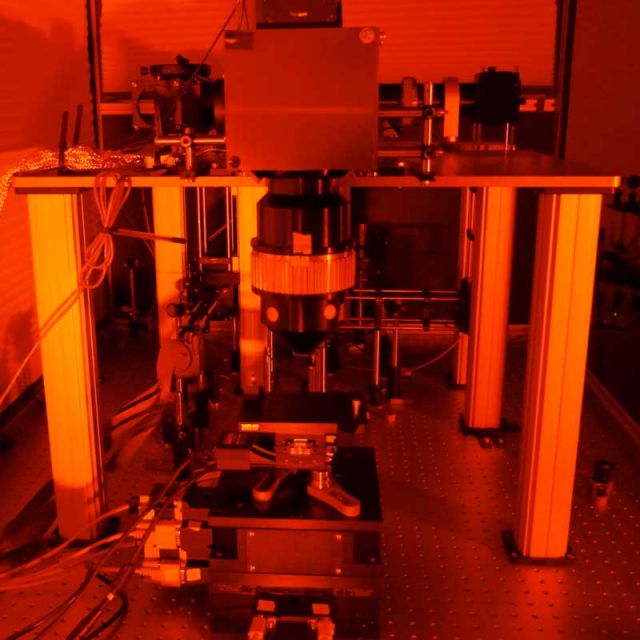Spencer Smith "A New Microscope"
ECE Associate Professor Spencer LaVere Smith and his Neuroengineering & Neuroscience Lab (SLAB) develop a new microscope for imaging neural circuitry

Excerpt from the The UCSB Current article "A New Microscope"
Advancing our understanding of the human brain requires new insights into how neural circuitry works in mammals, including laboratory mice. These investigations require monitoring brain activity with a microscope that provides resolution high enough to see individual neurons and their neighbors.
Two-photon fluorescence microscopy has significantly advanced researchers’ ability to do that, and the lab of Spencer LaVere Smith, an associate professor in the Department of Electrical and Computer Engineering at UC Santa Barbara, is a hub of research related to advancing the technology. As the principal investigator on the five-year, $9 million NSF–funded Next Generation Multiphoton Neuroimaging Consortium (Nemonic) hub, which was born of President Obama’s BRAIN Initiative and is headquartered at UCSB, Smith says he is working, “to push the frontiers of multi-photon microscopy for neuroscience research.”
Smith and his co-authors report the development of a new microscope they describe as “Dual Independent Enhanced Scan Engines for Large field-of-view Two-Photon imaging (Diesel2p),” in the Nov. 17 issue of Nature Communications. This new two-photon microscope provides unprecedented brain-imaging ability. It has the largest field of view (up to 25 square millimeters) of any such instrument, allowing it to provide subcellular resolution of multiple areas of the brain.
“We’re optimizing for three things: resolution to see individual neurons, a field of view to capture multiple brain regions simultaneously, and imaging speed to capture changes in neuron activity during behavior,” Smith explains. “The events that we’re interested in imaging last less than a second, so we don’t have time to move the microscope; we have to get everything in one shot, while still making sure that the optics can focus ultrafast pulses of laser light.”
The powerful lasers that drive two-photon imaging systems, each costing about $250,000, deliver ultrafast, ultra-intense pulses of light, each pulse being more than a billion times brighter than sunlight, and lasting 0.0001 nanosecond. A single beam, with 80 million pulses per second, is split into two wholly independent scan engine arms, so that the microscope can scan two regions simultaneously, with each configured to different imaging parameters.
The UCSB Current – "A New Microscope" (full article)